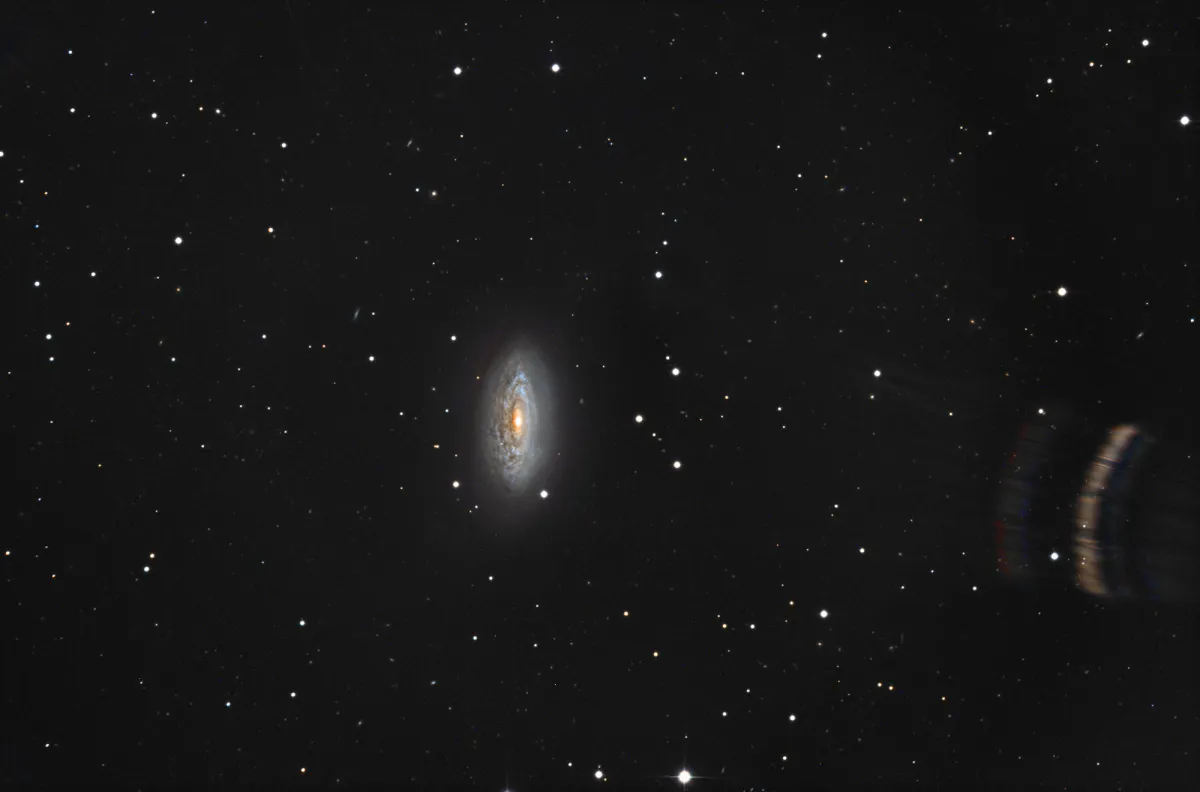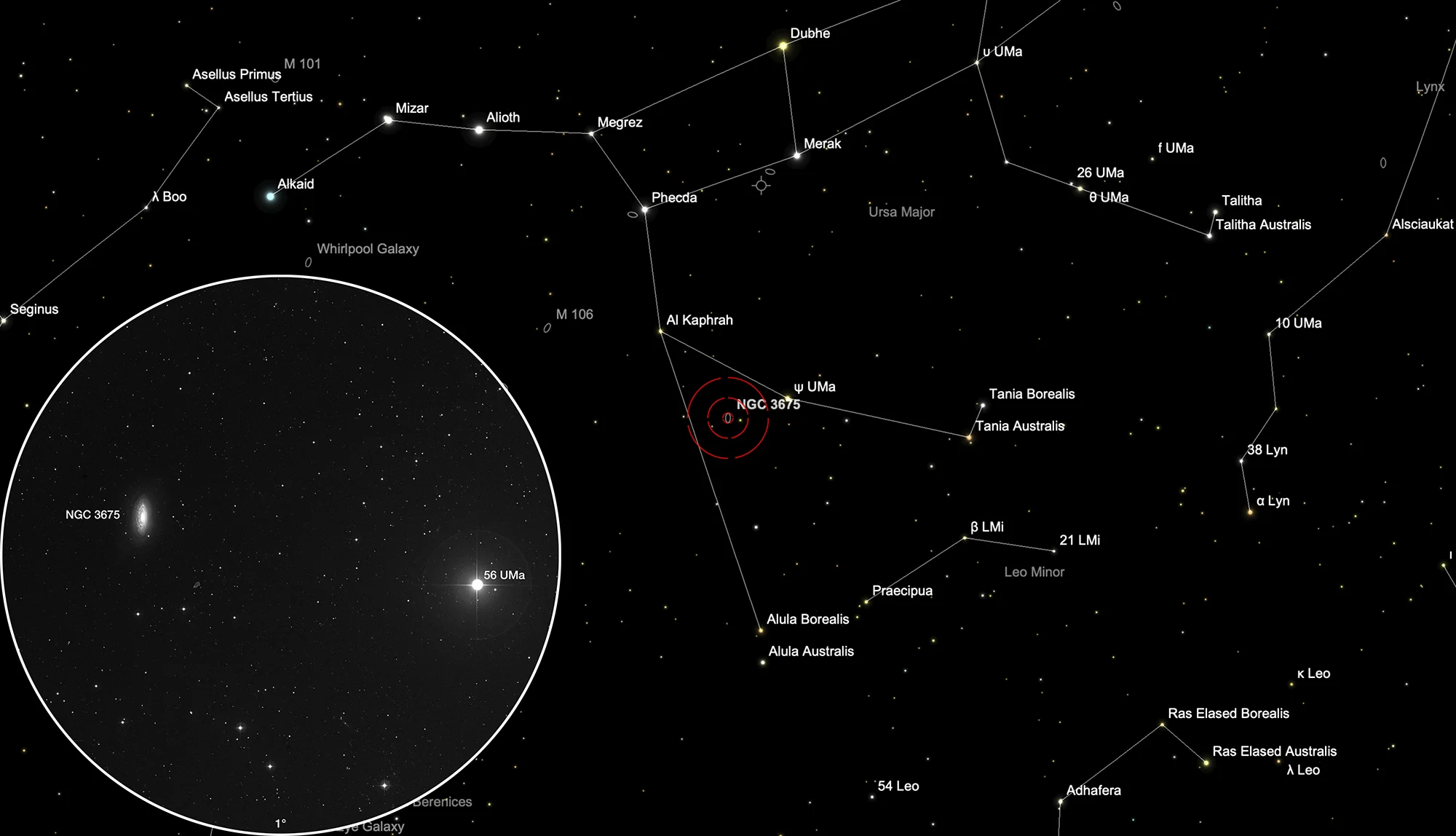Galaxy NGC 3675

History
The galaxy was discovered by William Herschel on 14 January 1788 and listed as I 194. He noted: «Very bright, considerably large, much extended towards meridian, bright nucleus 6' long 2' broad chevelure.» [464] John Herschel listed the galaxy as h 887 and wrote on 12 April 1830: «very bright; large; much extended; very suddenly much brighter towards the middle; 2' long, 40" broad, Many stars 14 and 15 mag preceding.» [466] On 17 March 1849, George Johnstone Stoney (Lord Rosse's assistant) wrote: «Dark space following centre strongly suspected.» [486]
Physical Properties
NGC 3675 is a spiral galaxy of morphological type Sb with a fairly bright infrared nucleus. About 20 % of its total mass is in the nuclear bulge. The plane of the galaxy is inclined ~67° towards line of sight. [243] Published distance determinations since 2007 vary from 11 Mpc to 20 Mpc. [145]
| Designation | NGC 3675 |
| Type | Gx (Sb) |
| Right Ascension (J2000.0) | 11h 26m 08.1s |
| Declination (J2000.0) | +43° 35' 11" |
| Diameter | 5.9 × 3.1 arcmin |
| Photographic (blue) magnitude | 11.0 mag |
| Visual magnitude | 10.2 mag |
| Surface brightness | 13.2 mag·arcmin-2 |
| Position Angle | 178° |
| Redshift (z) | 0.002568 |
| Distance derived from z | 10.85 Mpc |
| Metric Distance | 17.200 Mpc |
| Dreyer Description | vB, cL, vmE 0° ±, vsmbMN, many st p |
| Identification, Remarks | WH I 194; h 887; GC 2413; UGC 6439; MCG 7-24-4; CGCG 214-5 |
Finder Chart
The galaxy NGC 3675 is located in the constellation Ursa Maior. The constellation is circumpolar, but is highest at night from November to August, which is best for observing.
